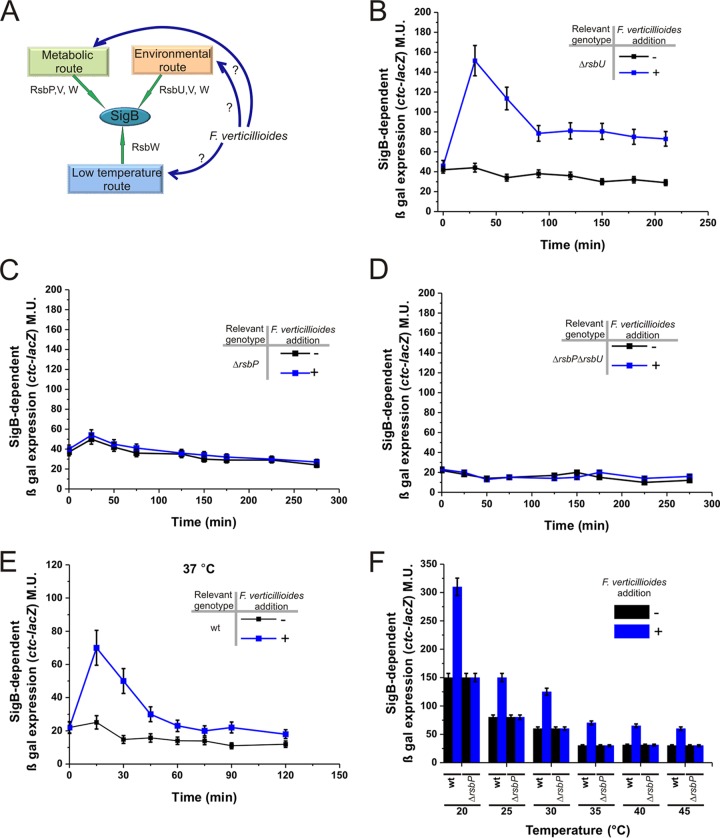FIG 3.
B. subtilis recognizes F. verticillioides via the energy-dependent pathway of the SigB regulatory cascade. (A) A cartoon summarizing the three known pathways of SigB activation, one of which is likely responsible for sensing the presence of the fungus (see the text for details). (B to F) β-Galactosidase activity of NCIB3610 isogenic strains harboring the ctc-lacZ fusion in wild-type background (strain DG555) (E and F) or affected in the different pathways of SigB activation: ΔrsbU (strain DG556) (B), ΔrsbP (strain DG557) (C), and ΔrsbUP (strain DG558) (D and F). Each bacterial culture was grown in LB broth with shaking at 28°C (B to D), 37°C (E), or the indicated temperatures (F) until the mid-logarithmic phase, at which time (time zero) the culture was divided into two subcultures and F. verticillioides was added to one of them (final fungal concentration, 1%). The incubation was continued as shown in the figure, and aliquots for the determination of β-galactosidase activity were taken at the indicated times and processed. For the experiment shown in panel F, β-galactosidase activity was determined 40 min after time zero. For panels B to F, a typical output from three independent experiments performed in parallel is shown.

